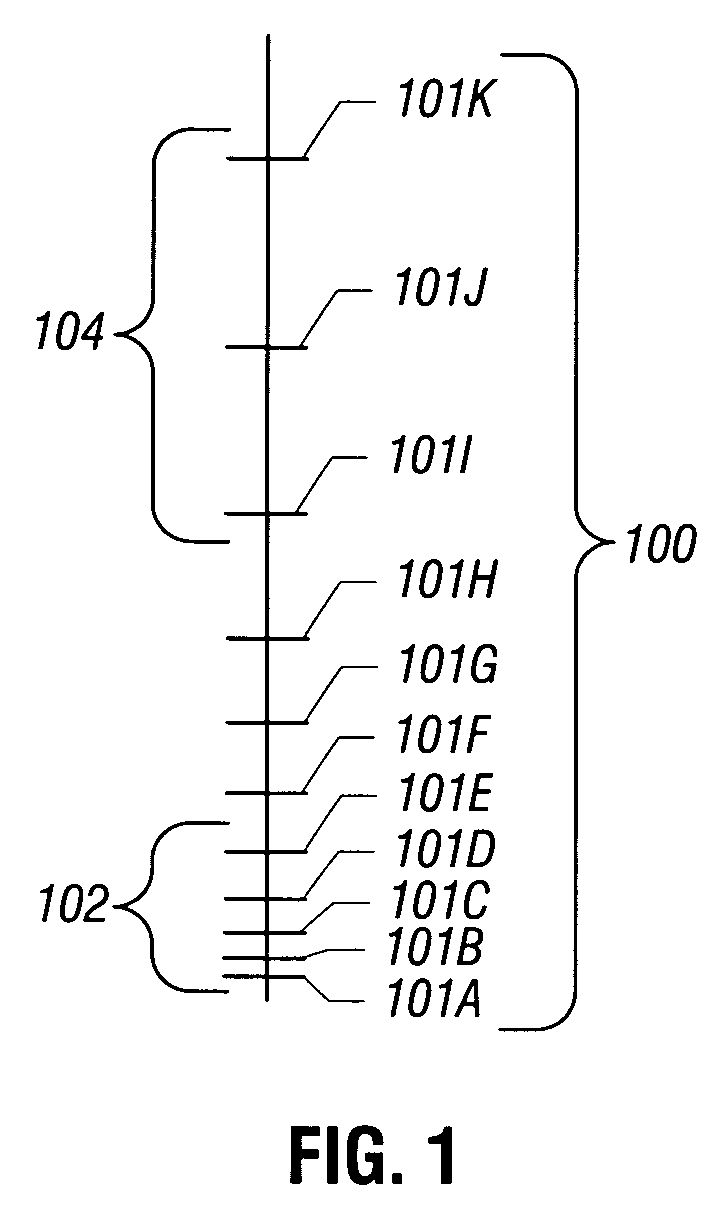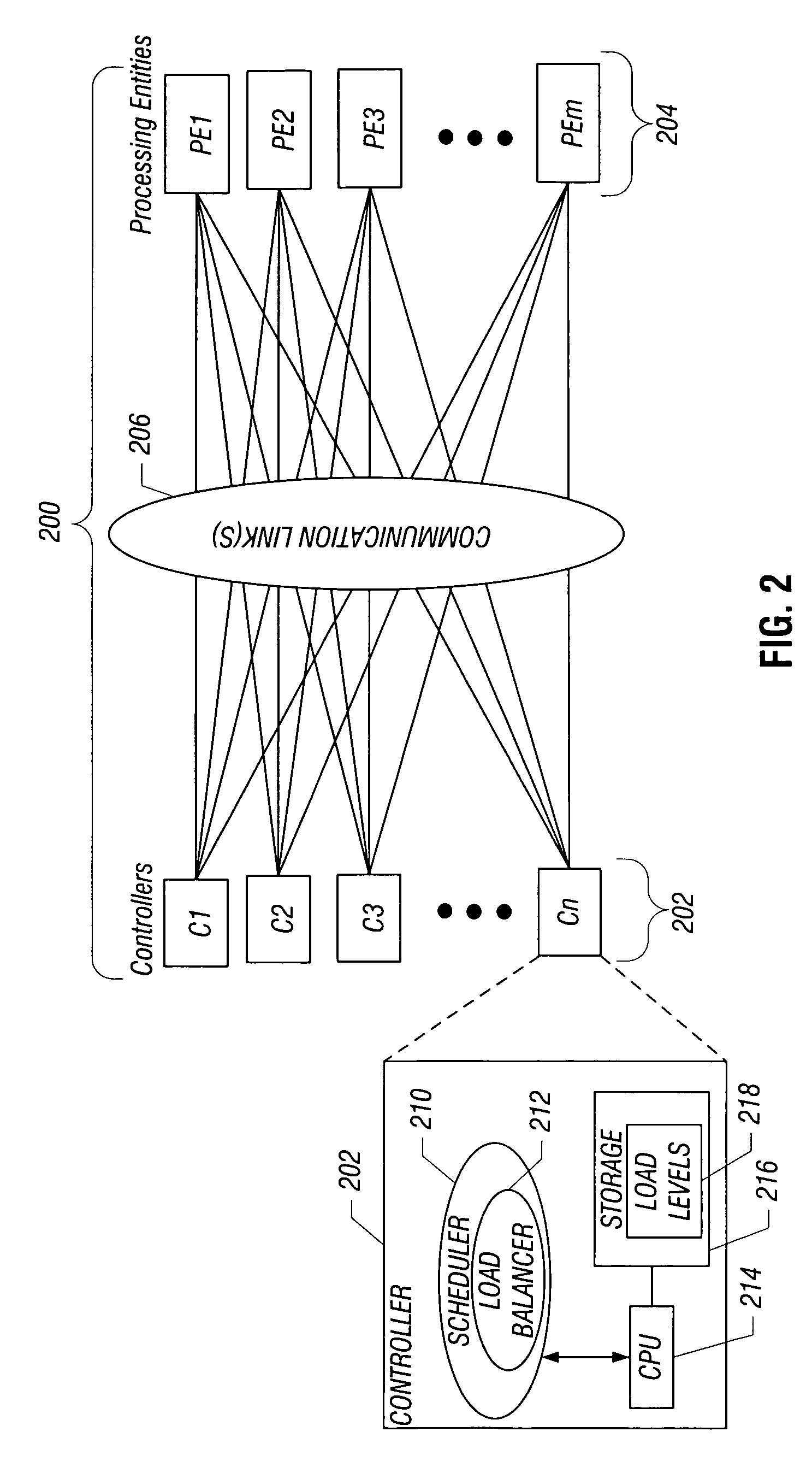Assigning work to a processing entity according to non-linear representations of loadings
a processing entity and nonlinear representation technology, applied in the direction of multi-programming arrangements, program control, instruments, etc., can solve the problems of large variation in workload at the processing entity, inability to efficiently handle sudden bursts of workload, and increased bursts of work previously handled by the processing entity
- Summary
- Abstract
- Description
- Claims
- Application Information
AI Technical Summary
Benefits of technology
Problems solved by technology
Method used
Image
Examples
Embodiment Construction
[0013]In the following description, numerous details are set forth to provide an understanding of some embodiments. However, it will be understood by those skilled in the art that some embodiments may be practiced without these details and that numerous variations or modifications from the described embodiments may be possible.
[0014]In accordance with some embodiments, a network system includes an arrangement of controllers and processing entities, where the controllers are able to assign work to the processing entities. Assigning “work” to a processing entity refers to assigning a task (or set of tasks) to be performed by the processing entity, where each task can be any of the following: communication of data traffic (e.g., voice data, packet data, video data, etc); communication of control traffic (e.g., control messaging), or any other processing task.
[0015]At least some of the controllers are able to use a companding weighted load balancing algorithm according to some embodimen...
PUM
 Login to View More
Login to View More Abstract
Description
Claims
Application Information
 Login to View More
Login to View More - R&D
- Intellectual Property
- Life Sciences
- Materials
- Tech Scout
- Unparalleled Data Quality
- Higher Quality Content
- 60% Fewer Hallucinations
Browse by: Latest US Patents, China's latest patents, Technical Efficacy Thesaurus, Application Domain, Technology Topic, Popular Technical Reports.
© 2025 PatSnap. All rights reserved.Legal|Privacy policy|Modern Slavery Act Transparency Statement|Sitemap|About US| Contact US: help@patsnap.com



